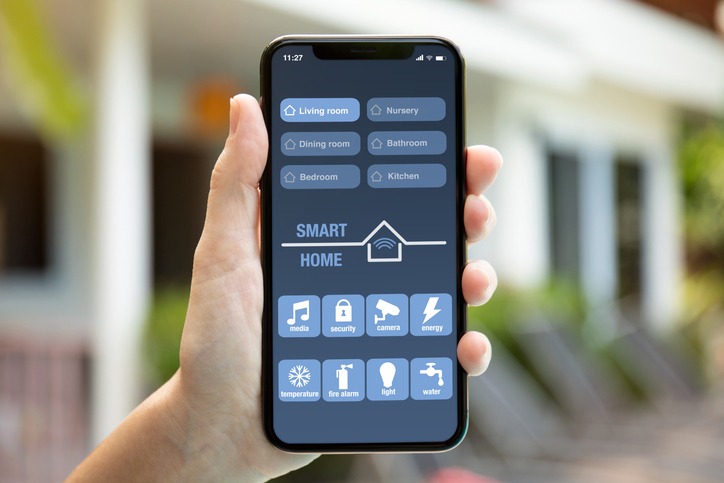A lot of newer homes are being designed, constructed, and built with smart home implementation in mind. Whereas, owners of older homes are looking to retrofit their homes with smart technology and types of charging ports to bring their homes into the new smart home age. While a large percentage of homes do run on Insteon and X10, both WiFi and Bluetooth have exponentially increased in popularity and mainstream appeal.
Two of the more common home automation communication protocols being used nowadays are Z-Wave and Zigbee. Each of these technologies uses mesh networking. They emit low-power radio signals to effectively connect the smart home systems. While both of these technologies target the same smart home applications, Z-Wave does have a longer range. Z-Wave’s range is 30 meters and Zigbee’s is only 10. Whereas, Zigbee is seen as the more complex technology of the two. You’ll find many companies offering Zigbee chips whereas only Sigma Designs is offering Z-Wave.
An effective smart home has a bunch of smart devices that communicate with one another. Instead, it’s a home that has a lot of devices working seamlessly together to create a reliable and automated network. In a smart home, the devices are controlled by a master home automation controller. This is typically what’s referred to as a smart home hub. This piece of hardware acts as the brains of the network. It’s the central point of the smart home system and it’s capable of processing data and communicating wirelessly to the various smart home devices. It works to combine all of the various apps into a single smart home application. This allows a homeowner to have precise control over all of their smart home devices easily and conveniently in a single app and using a single ecosystem. Some examples of popular hubs in the marketplace include Samsung SmartThings, Google Home, and Amazon Echo.
These systems can be designed on your own. For instance, if you purchase and use a Raspberry Pi, you can create your home automation project that allows you to control all of your devices in your home. You can find other devices purchased as a bundled kit or through a smart home platform which can help to create your home automation project.
Events can either be triggered or timed in basic smart home scenarios. Any events that are timed are going to be based on the clock. Whereas, if they are triggered, it will be based on specific actions. For instance, if you schedule your garage door to close when you connect to your vehicle’s Bluetooth, it will trigger your smart garage door to close.
Both Artificial Intelligence and machine learning are getting more and more popular as it relates to smart home systems. This is allowing smart home systems to have more features and capabilities to adapt to the environment. For instance, you will find Google Home and even Amazon Echo offer virtual assistants that can help trigger certain things and even personalize the smart home to your patterns and preferences.
Smart Buildings
Every smart home is indeed a smart building, but it’s not true the other way around. You will find that commercial, industrial, and enterprise buildings of all shapes and sizes are utilizing these smart technologies to improve efficiency throughout their properties. These technologies are being used to boost security, increase efficiency, and improve the satisfaction of everyone in the properties.
A lot of the technologies being used at an enterprise level are the same technologies being used for regular consumers in smart homes. This includes energy, air conditioning, security, and lighting systems.
For instance, you will find that a smart building could easily reduce wasted energy costs by leveraging the power of sensors to detect whether or not someone is using a particular room. This allows the system to trigger and adjust based on whether or not the room is being used. It can even detect the number of occupants to know how high to turn the heat or air conditioning.
A smart building can even connect to the grid itself. Smart buildings and their components can speak with the grid. This can help to manage energy distribution more effectively. It can make it easier to maintain buildings and any potential outages can be dealt with more quickly.
Along with these benefits, smart buildings can also offer preventive maintenance that you couldn’t get without them. After all, these systems can alert you when things are running low when the lighting system isn’t working, when the heat or A/C is malfunctioning, and more.

